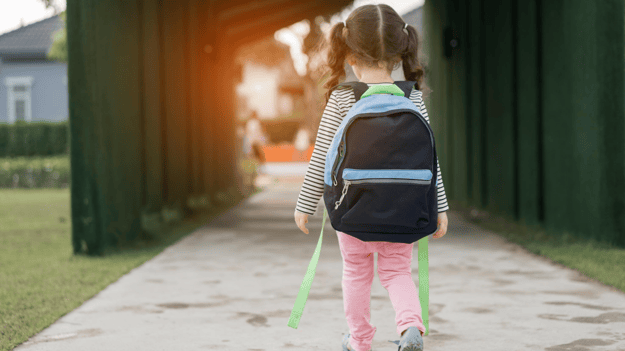
After an extended period of time at home, children are likely to be somewhat anxious about the quickly approaching new school year. This, combined with the new environment they will be experiencing this fall, means it is important that we begin to have conversations now about what school will look like and how we can all be best prepared to come together again in a healthy way, physically and emotionally.
Health reminders: Our children are more aware of health measures than ever before. This continued focus on hand-washing and mask-wearing will help students prepare for the new procedures they will encounter at school this fall. Encourage them to wash their hands regularly throughout the day using soap and warm water, making sure they count to the recommended 20 seconds (make it fun by singing a familiar song!). Begin discussions now about the importance of mask-wearing and work toward building their tolerance for the mask. Have your children pick out a mask that is comfortable and that they are excited to wear. Talk about physical distancing and respecting the space of those around us. In order to help our students visualize this distance, consider measuring out with them what a six-foot space looks like. Children are incredibly resilient; through continued discussions and practice, they will likely adapt quickly to these new health measures.
Open lines of communication: As we have navigated this time of crisis, it has continually been important to speak with your children and check in frequently. When students transition back to campus in the fall, they will face a wide array of feelings. Talk about any apprehensions or fears they may have about returning to campus, which are valid responses to current events. Although, as adults, we may have our own anxieties about resuming activities, it is important that we model emotional resilience for them, remaining calm and proactive. It will also help to share as much information as age-appropriate in order to prepare students, like the new schedule, precautions the school is taking, and their new classroom location. Sharing this information will likely prompt additional questions and allow them the time to process their thoughts and feelings before they return to school. This knowledge will help empower students and allow them to anticipate and prepare for these changes.
Practice relaxation strategies: Teaching coping strategies now will benefit your children, both now and in the future, in helping them adapt when they are feeling overwhelmed. Discuss mindful breathing, journaling, reading, drawing, or simply talking through their concerns; these healthy outlets will help prepare children for how they can respond to times of stress in a healthy and meaningful way.
Reconnect with peers: Since students have been away from each other for an extended period of time, consider spending some time before school starts helping them reconnect with their peers, with a Zoom chat or a physically distant playdate at a local park. The anticipation of this upcoming school year is going to be unique, so the opportunity to connect with their friends before the first day will eliminate one possible stressor and allow them to begin processing with those that will be with them throughout the experience.
Establish routine: Summer is a valuable time to unplug and allow our children the opportunity to deviate from their typical routines and schedule. This is essential in helping children fully relax and be present. However, given the amount of time away from school, consider re-instituting some structure in their day. Encourage them to get back to a schedule that is reflective of their routine during the school year. Doing this for a week or so before on-campus instruction begins will give students the opportunity to transition back in a smoother and more deliberate way.
The key to weathering this difficult time with our families is to remain open and empathetic. The experience of the last several months has been truly life changing, and we cannot underestimate the impact it has had on the younger members of our community. Therefore, remember, when you begin the conversations about transitioning back to school in the fall, to do so by creating an environment of empathy and support. This will allow our children the opportunity to process this transition fully and help them embrace their new academic environment securely and optimistically.





